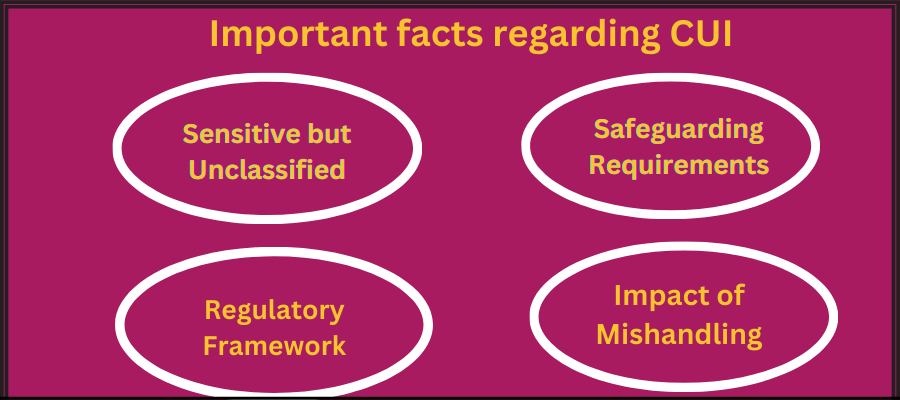A. It poses no threat to government missions or interests.
B. It is designated as CUI at the discretion of the information owner.
C. It must be managed by safeguarding or dissemination measures.
D. It may be used to conceal material that is potentially humiliating for the government.
Correct Answer: Option C: It must be managed by safeguarding or dissemination measures.
Explanation:
Want to Know more about CUI let's read below:
The term "controlled unclassified information" (CUI) describes information produced or owned by the federal government of the United States that is not classified under Executive Order 13526 or the Atomic Energy Act but that needs to be protected or disseminated in accordance with laws, rules, or government-wide policies.
Important facts regarding CUI:

Sensitive but Unclassified: This category includes a broad range of material that requires protection but does not fit the requirements for national security classification, such as financial data, export-controlled data, or personally identifiable information (PII).
Safeguarding Requirements: Particular handling, safeguarding, and dissemination requirements are necessary for CUI. These safeguards make sure that anyone who isn't authorised can't access or distribute the data.
Regulatory Framework: Executive Order 13556 governs the CUI Program, which is run by the National Archives and Records Administration (NARA). Standardising the marking, storing, transmitting, and handling of sensitive information across agencies is the aim.
Impact of Mishandling: If sensitive personal or proprietary information is involved, improper handling or distribution of CUI may have legal or administrative repercussions.
CUI is crucial because it seeks to safeguard private data while encouraging openness and appropriate information exchange both inside and between government organisations and contractors.


















